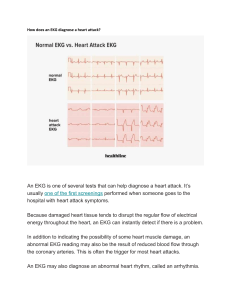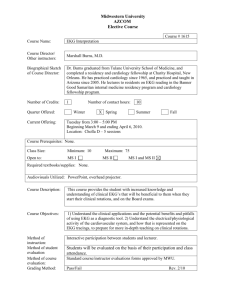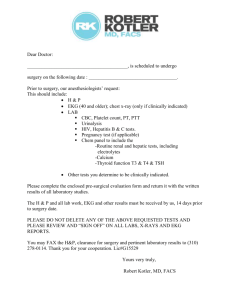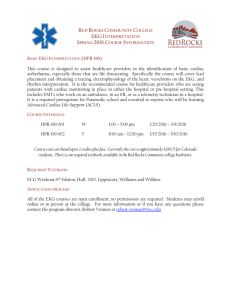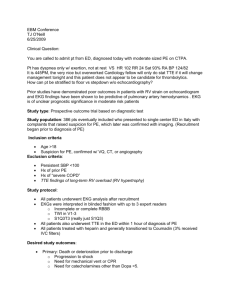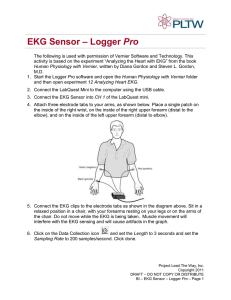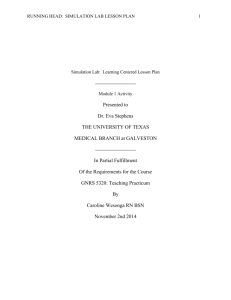How do we determine our Heart Rate
advertisement
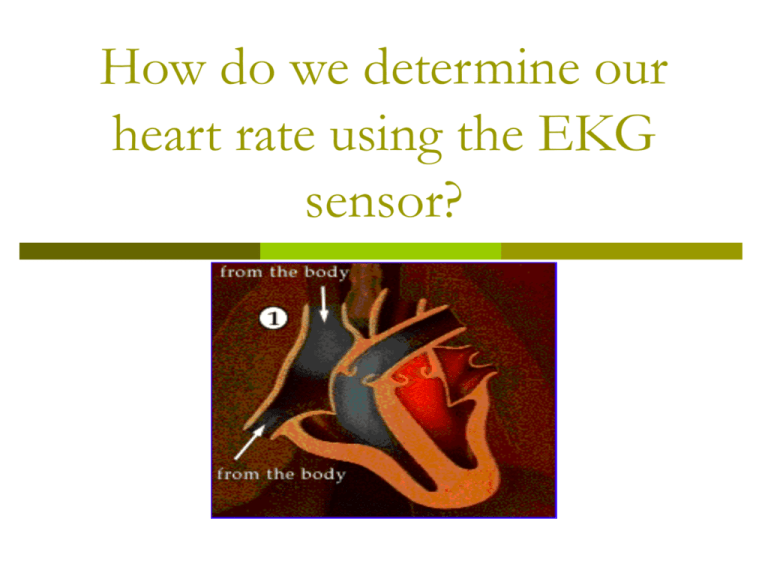
How do we determine our heart rate using the EKG sensor? Instructional Objectives: Background Information on EKG Methods of Measuring Heart Rate Experimental Setup What is an EKG? Electrocardiogram (EKG) - An instrument used in the detection and diagnosis of heart abnormalities. It measures electrical potentials on the body surface and generates a record of the electrical currents associated with heart muscle activity. By analyzing the EKG, damage to a specific region of the heart can be detected. Experimental EKG Data Calculating Your Heart Rate # beats 1 beat 60 seconds minute n seconds 1 minute Measuring Heart Rate Without Instrumentation Heart rate can be determined by measuring pulse rate. The pulse rate is the rate at which a series of pressure waves travel within an artery. Each time blood surges from the aorta, the elastic walls of blood vessels expand and stretch, causing a pulse. Measuring Heart Rate With Instrumentation Use the EKG sensor to graph your heart’s electrical activity. Place three electrode patches on your arms as shown in the diagram. Connect the alligator clips from the sensors to the tabs of the electrode patches. Green (negative) Collect data with the LoggerPro. Calculate heart rate by determining the time interval between the R waves on the EKG graph. Black (ground) Red (positive) Experimental Setup Student EKG sensor LoggerPro Computer Discussion Questions: Average Heart Rate: 70-90 beats/min Maximum Heart Rate: 220 beats/min – Individual’s Age Comparison of experimental findings versus theoretical data Causes for discrepancies Factors not taken into account during experiment: Age Weight Health Condition Gender LAB TIME!!!
